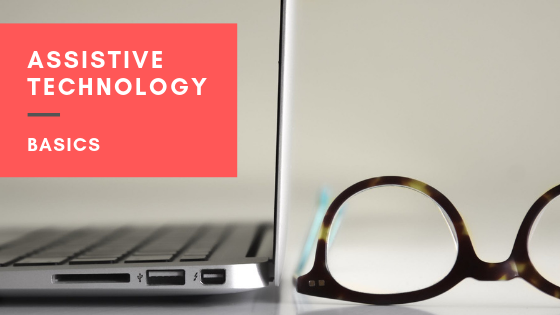"Technology is anything that was invented after you were born." - Alan Kay
The term "assistive technology" might sound overwhelming, but chances are that everyone at some point in their lives uses it for a variety of academic and non-academic purposes. The term really just refers to devices that help people with physical, learning, or other disabilities operate more efficiently and effectively in their day-to-day lives.
One particular assistive technology has helped me immensely since I was in the 6th grade: contact lenses. This assistive device not only enabled me to see the directions written on the whiteboard when I was in school, but contacts help me drive safely, play basketball, and spot my kid in a crowd at the airport. Assistive devices in the classroom can be "low-tech" like my contact lenses, pencil grips, or slant boards for students with handwriting difficulties, or "high-tech" devices like speech-to-text tools on phones, tablets, or computers.
Some educators still think that students with learning differences should not use assistive technology in a school setting because it is cheating, or that these students really should be taught the "real way" of doing things without assistance. I'm certainly glad that my teachers didn't make me take out my contacts during tests, or force me to undergo hours of vision therapy interventions to attempt to teach me how to see better. My teachers also did not deny the effectiveness of contact lenses even though the kind I used was invented well after they were born.
Assistive technology can help students with dyslexia and other language-based learning differences access information and communicate. Tools like speech-to-text and text-to-speech capabilities have ingrained themselves in our mobile devices and home assistants (familiar with Siri and Alexa?), and technology is allowing people to make their reading and writing environments increasingly customizable (Dark Mode on the new macOS, anyone?). Assistive technologies can also help those with attention difficulties direct their focus, and those with executive functioning difficulties remember, plan, and prioritize tasks.
Here are some more resources to get you more familiar with common assistive technology tools for learning differences and more:
Assistive Technology Basics from Understood.org - this has many great resources!
Apple's Accessibility Features on the Mac
Apple's Accessibility Features on the iPad
Google's Accessibility Tools on Chrome & Android devices
Have an assistive tech tool that you or your students can't live without? Leave a comment!

The seventh graders have really taken to dictation! How they use it varies: dictate isolated words they don't know how to spell, dictate their homework into Reminders to save time in class, or dictate the whole five-paragraph rough draft. Regardless of what they use it for, it does increase their productivity. At the same time, we found the need to revisit effective ways to dictate (such as using a mic, refraining from shouting, checking back the words dictated).
ReplyDeleteAnother way in which we use assistive tech is text-to-speech as a revision tool: the kids play their work while listening for inaccuracies.